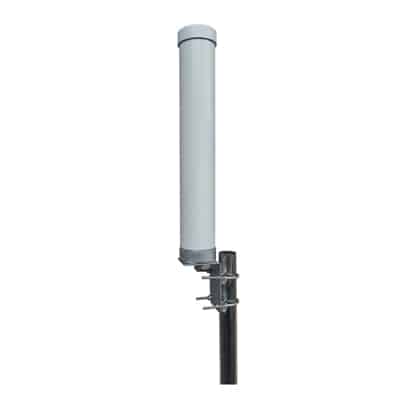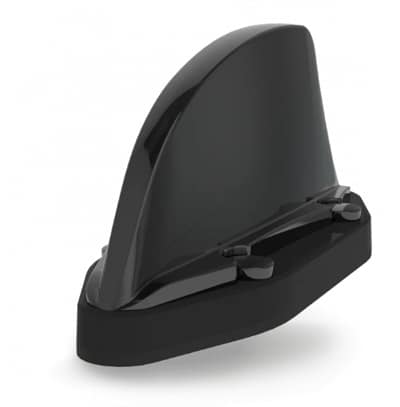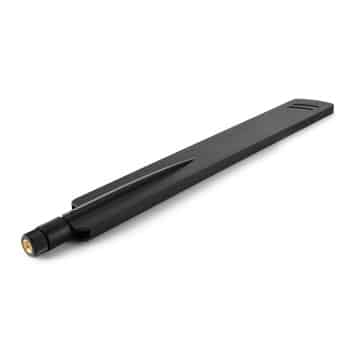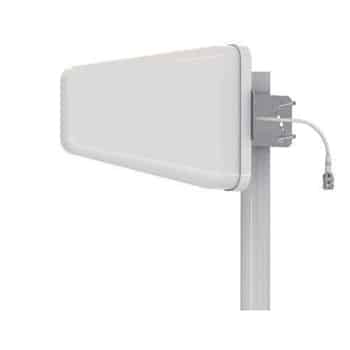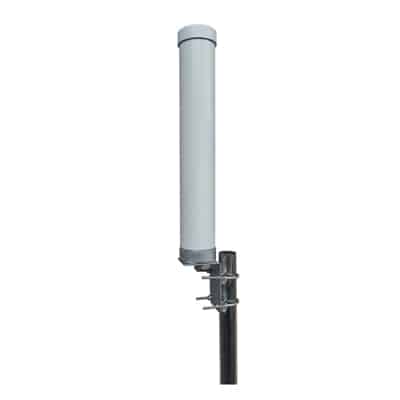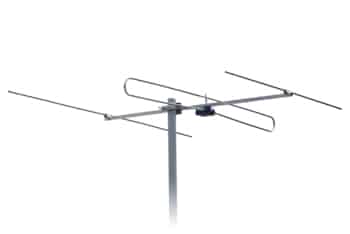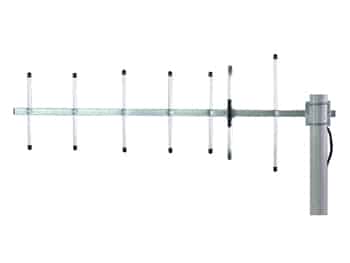
Ceiling mount antenna, like other antennas, are designed to provide steady coverage while boosting signal reception and transmission. However, what really sets them apart is how they easily blend into indoor settings. The ability of these devices to mix well with indoor settings has made them an important element for reliable connectivity across home, office, and industrial environments.
This article aims to provide a thorough introduction to ceiling mount antennas, emphasizing their functionality, design, and real-world uses. Additionally, the article also explores important factors to be considered while choosing and installing a ceiling mount antenna, thereby providing the readers with a well-rounded understanding of making informed decisions.
Table of Contents
ToggleIntroduction
Modern buildings face a growing challenge as even though 80% of all wireless communication happens indoors, traditional outdoor cellular networks are often not able to provide reliable coverage indoors. This challenge has led to the rise of innovative solutions such as ceiling mount antennas, which have been designed to enhance indoor signal strength and ensure consistent connectivity.
Ceiling mount antennas are engineered to provide uniform coverage by being strategically placed on ceilings. As their advanced design allows them to overcome structural obstacles, they are able to deliver reliable signals, even in spaces with high user density. These antennas are not only practical but also compact and visually unobtrusive, making them suitable for both public and private settings.
By addressing the limitations of traditional networks, ceiling mount antennas have been able to ensure reliable wireless communication across multiple floors and sections of a building keeping up with the ever-growing demand for efficient and reliable indoor connectivity.
What is a Ceiling Mount Antenna and How Does it Work?
Ceiling mount antennas are specialized devices designed to optimize indoor wireless signal coverage. Installed on ceilings, these antennas broadcast and receive radio frequency (RF) signals, ensuring strong and reliable connections for cellular communications, Wi-Fi, and other network services. Their effectiveness lies in their ability to deliver consistent signal coverage across specific frequency bands, making them vital for environments with high connectivity demands.
The design and functionality of ceiling mount antennas rely on their radiation patterns and placement. Most ceiling mount antennas are omnidirectional, providing 360-degree horizontal coverage while maintaining a dipolar vertical pattern. This configuration ensures even signal distribution throughout a space. However, directional antennas are also available for targeted coverage, such as in hallways or specific zones.
There are several types of ceiling mount antennas which cater to different needs,
- Omnidirectional Antennas: Offer broad, 360-degree coverage, ideal for open areas.
- Multi-Band Antennas: Support multiple frequency ranges, enabling compatibility with various services.
- Low-PIM (Passive Intermodulation) Rated Antennas: Engineered for high-performance applications, particularly in distributed antenna systems (DAS).
Environmental factors such as physical obstructions, RF interference, and surrounding materials can also influence the antenna’s performance. Typically, ceiling mount antennas cover a range of 15 to 50 feet, depending on the model and installation conditions. By integrating with network infrastructure and ensuring precise placement, these antennas are able to minimize interference and maximize signal strength, providing users with a reliable and efficient communication experience.
Supported Frequency Bands
Ceiling mount antennas are versatile devices as they are designed to support a variety of frequency bands. Commonly supported bands include:
- 2.4 GHz: Widely used for Wi-Fi networks, this band offers a good range and the ability to penetrate walls effectively. However, it is susceptible to interference due to overcrowding from nearby networks and devices.
- 5 GHz: Known for faster data speeds, this band has a shorter range and is less effective at penetrating walls. It works best in high-density environments where speed is prioritized over range.
- Cellular Bands: These include ranges like 700 MHz, 850 MHz, 1900 MHz, 2100 MHz and 2600 MHz, which are critical for cellular communication standards such as LTE and 5G. Lower bands (e.g., 700 MHz) are better at covering large areas and penetrating buildings, while higher bands (e.g., 2100 MHz) offer higher capacity but shorter range.
By supporting multiple frequency bands, ceiling mount antennas can adapt to a wide range of applications, from providing reliable Wi-Fi in offices to enhancing cellular connectivity in large buildings or public venues. Therefore, selecting the right frequency band is essential to ensure optimal performance based on the environment and specific use case.
Common Applications of Ceiling Mount Antennas
Ceiling mount antennas play a critical role in modern wireless communication, offering a variety of solutions for a range of environments. Some of their common use cases include:
- Enhanced Indoor Coverage: Ceiling mount antennas are ideal for improving wireless coverage in large buildings or multi-floor spaces. By their strategic placement, they ensure strong, reliable signals across entire areas. This is especially important in commercial spaces, where uninterrupted connectivity is a must.
- Distributed Antenna Systems (DAS): Often integrated into DAS setups, ceiling mount antennas help enhance cellular and broadband coverage in challenging indoor environments such as stadiums, malls, and office complexes. By evenly distributing multiple antennas, these systems ensure consistent signal strength across expansive areas.
- Wi-Fi Access Points: Ceiling antennas are frequently deployed as part of Wi-Fi networks. Positioned on ceilings, they provide maximum coverage while keeping workspaces organized and free of unnecessary hardware clutter.
- Event Venues: In temporary spaces like trade shows or conventions, ceiling mount antennas deliver dependable wireless communication for attendees, vendors, and event organizers, ensuring smooth operations and connectivity.
- Smart Buildings: With the rise of IoT technology, ceiling mount antennas are instrumental to connecting smart devices. They enable communication between devices, supporting applications like energy management, security systems, and automated controls.
Ceiling mount antennas are a cornerstone of modern communication systems, offering solutions that cater to a variety of environments and applications. Their ability to enhance indoor coverage, drive systems like DAS, and support cutting-edge technologies such as IoT highlights their versatility and importance. Whether in office buildings, event venues, or smart facilities, these antennas are dedicated to provide reliable, high-quality performance to meet the growing demands of the ever evolving landscape of wireless communication.
The Advantages and Disadvantages of Ceiling Mount Antennas
When deciding to invest in ceiling mount antennas, understanding both their benefits and drawbacks is essential in making an informed choice.
Advantages
- Enhanced Signal Coverage: Thanks to their elevated positioning, ceiling mount antennas can deliver more uniform and reliable signal coverage, especially in large or complex indoor environments. Their placement allows even signal propagation, reducing dead zones.
- Reduced Interference: By being mounted above walls, furniture, and other obstacles, these antennas minimize interference that can disrupt wireless connections, ensuring stable and consistent performance.
- Aesthetic Integration: Designed with indoor settings in mind, ceiling antennas blend easily into ceilings or tiles, maintaining the visual appeal of spaces without bulky, obtrusive equipment. This makes them ideal for offices, hotels, and retail environments.
- Versatility: Ceiling antennas are compatible with various applications, from providing Wi-Fi coverage in corporate settings to enhancing cellular connectivity in public venues like malls and stadiums. Furthermore, their ability to support multiple frequency bands adds to its usability.
Disadvantages
- Installation Complexity: Proper installation may sometimes require professional expertise to ensure optimal placement and configuration. This in turn may add to the overall cost and may also extend deployment timelines.
- Limited Range in Large Outdoor Areas: While excellent for indoor environments, ceiling antennas are not designed for expansive outdoor coverage. Their range can be limited in open spaces, where other antenna types like outdoor or directional antennas may be more effective.
- Infrastructure Dependency: The performance of ceiling mount antennas is closely tied to the quality of the existing network infrastructure. Outdated or poorly designed systems can limit their effectiveness, potentially reducing the benefits they offer.
- Cost: High-quality ceiling mount antennas, particularly those designed for advanced applications like DAS or multi-band connectivity, can be expensive.
Additional Considerations
- Maintenance Requirements: While ceiling antennas are generally low-maintenance, accessing them for repairs or upgrades can be difficult due to their location. Proper planning during installation can help mitigate this issue.
- Environmental Factors: Ceiling mount antennas may be sensitive to environmental conditions such as temperature or humidity in certain settings, especially in areas like warehouses or factories. Choosing models with appropriate specifications can address this challenge.
Ceiling mount antennas offer a wide range of advantages that make them indispensable in modern wireless communication setups. However, they also come with certain limitations. Therefore in order to make an informed choice users need to weigh the benefits against the drawbacks and factor in the need to maximize their investment.
Ceiling Mount Antenna vs. Wall Mount Antenna
Choosing the right antenna depends on the specific needs, the environment, and the intended application. Given below is a comparison between ceiling and wall-mounted antennas:
Ceiling Mount Antenna
1. Pros:
- Superior Signal Dispersion: Ceiling antennas are ideal for evenly distributing signals across larger, open areas like offices, conference halls, or shopping malls. Their placement at higher elevations allows signals to propagate more uniformly.
- Reduced Interference: Being mounted above obstacles such as walls or furniture significantly reduces potential signal interference, ensuring better connectivity in complex indoor spaces.
- Aesthetic Advantage: Designed to integrate into ceilings, these antennas remain out of sight, contributing to a clean and professional look in the environment.
2. Cons:
- Complex Installation: Installing ceiling antennas may sometimes require professional expertise to ensure proper alignment and connectivity which will add to the overall cost and effort.
- Limited Outdoor Utility: Ceiling antennas are primarily designed for indoor use and may not perform effectively in outdoor or expansive open areas where directional or external antennas may prove to be more effective.
Wall Mount Antenna
1. Pros:
- Simpler Installation: Wall-mounted antennas are easier and quicker to install, often requiring minimal setup and no need for professional services.
- Localized Coverage: They are well-suited for providing targeted signal coverage in specific areas like hallways, meeting rooms, or individual office spaces.
- Cost-Effective: Typically, wall antennas have lower upfront costs, making them a budget-friendly choice for smaller or localized applications.
2. Cons:
- Higher Interference: Due to their relatively lower placement, wall antennas are more at risk to interference from obstacles like furniture, machinery, or crowded environments.
- Limited Coverage: Wall antennas may struggle to provide adequate coverage in larger areas or spaces with high user density compared to ceiling-mounted options.
When choosing between ceiling and wall-mounted antennas, the decision largely depends on the building layout, signal needs, and ease of installation. Ceiling antennas are better suited for open-plan areas requiring uniform, all-around coverage, while wall-mounted antennas excel in narrow or segmented spaces that need targeted signal boosts. However, ceiling antennas may often demand more complex installation infrastructure, while wall antennas can be mounted with basic tools. Ultimately, evaluating the space’s layout, coverage requirements, and budget constraints will help in determining the best option for reliable indoor connectivity.
The Role of Ceiling Mount Antennas in Distributed Antenna Systems (DAS)
Distributed Antenna Systems (DAS) are designed to enhance wireless coverage in areas where traditional outdoor signals struggle to penetrate. These systems are especially critical in large buildings, tunnels, and densely populated urban environments, where obstacles like walls, concrete, and metal can weaken or block signals. A DAS works by redistributing wireless signals from a central source such as a base station to multiple antennas strategically placed throughout a structure, ensuring consistent and reliable coverage.
Ceiling mount antennas play a vital role in DAS setups. Their placement on ceilings allows for optimal signal dispersion, providing uniform coverage across large areas. By integrating ceiling antennas into a DAS, organizations can achieve several benefits which include:
- Improved Signal Strength: Incorporating ceiling mount antennas with DAS enables cellular and Wi-Fi signals to reach deeper into buildings, eliminating dead zones and ensuring strong connections.
- Support for High User Density: Ceiling mount antennas in a DAS can handle large numbers of users simultaneously, making them indispensable in venues like stadiums, airports, and shopping malls.
- Enhanced Network Performance: By balancing the signal load across multiple antennas, DAS configurations with ceiling mounts ensure stable and high-quality connectivity for users.
- Flexibility Across Frequencies: Ceiling mount antennas in DAS systems support a wide range of frequency bands, enabling compatibility with various technologies like LTE, 5G, and Wi-Fi.
Additionally, ceiling mount antennas are designed to blend seamlessly into indoor environments, making them aesthetically suitable for commercial and public spaces. While the installation of DAS with ceiling mount antennas requires careful planning and investment, the result is a robust communication network capable of meeting the demands of modern connectivity.
Factors to Consider When Choosing a Ceiling Mount Antenna
Selecting the right ceiling mount antenna involves evaluating several key factors to ensure it meets with the set requirements and delivers optimal performance. These factors include:
- Coverage Area and Signal Requirements: First the size and layout of the space to be covered needs to be assessed. In addition, consider the type of the signal used in order to ensure that the antenna’s range and output power match with the set requirements.
- Compatibility with Existing Systems: The antenna should integrate well with the current network setup, including base stations, routers, or distributed antenna systems. Therefore check for compatibility with the existing equipment’s frequency bands and connectors to avoid connectivity issues.
- Budget Considerations: Ceiling mount antennas come in a wide price range, which is influenced by factors such as frequency support, design, and performance features. Also account for additional costs such as cables, connectors, and professional installation if required.
- Antenna Connector Type: Different antennas use specific connector types like N-type or SMA connectors. Ensure the chosen antenna’s connector is compatible with existing network hardware to avoid performance bottlenecks or additional costs for adapters.
- Cable Type and Length: The type and length of cable used can significantly impact signal quality. Longer cables often result in signal loss, so choose low-loss coaxial cables suitable for the installation environment. Ensure the cable type matches the antenna’s and equipment’s specifications for effective operation.
- Frequency Range Needed: Identify the frequency bands the application requires. For instance, Wi-Fi antennas commonly operate on 2.4 GHz and 5 GHz bands, while cellular antennas may support frequencies such as 700 MHz to 2700 MHz. Select an antenna that covers all necessary bands for the application.
- Ease of Installation: Consider whether the installation process needs professional assistance. Some antennas require specialized mounting brackets or precise alignment for optimal performance.
By carefully evaluating these factors, a ceiling mount antenna that meets both connectivity needs and existing infrastructure can be selected, maximizing performance while staying within budget.
How to Install a Ceiling Mount Antenna
Installing a ceiling mount antenna is relatively simple if the right steps are followed. Below are some important points to consider for a successful installation:
1. Planning the Installation:
Start by selecting the best site for the antenna. The ideal location is as high as possible, preferably near the center of the area that needs to be covered. This helps in avoiding obstructions that can block the signal and ensures a clear signal path for better coverage. Take note of the building layout, including walls, metal objects, or other structures that could cause interferences.
2. Check Compatibility:
Ensure the antenna is compatible with the current system. Double-check that the antenna’s frequency range matches requirements and that the connectors are compatible with existing network equipment, such as routers or base stations.
3. Gather Necessary Tools:
Before starting with the actual installation, make sure that all the required tools are available. Especially the drill with the appropriate drill bits, screws, a screwdriver, a level, washers, nuts, and possibly a hole punch or cutter. Having everything ready will save time and ensure a smooth installation process.
4. Mounting the Antenna:
To install, drill a hole large enough to accommodate the reversed N connector or other appropriate connectors specified for the antenna model. Secure the antenna with washers and nuts, ensuring it is mounted firmly to the ceiling. Use a level to check the alignment so the antenna is positioned correctly for even signal dispersion.
5. Safety Considerations:
It’s important to maintain a safe distance between the antenna and electric power lines or metal surfaces. This will help prevent any electrical interference and ensure that the antenna operates safely. Be sure to comply with all RF safety regulations, keeping clearance around the antenna to avoid any health risks or signal interference.
6. Connect the Antenna:
Once the antenna is mounted, connect the appropriate cables to the antenna’s connectors. Be sure the connections are firm and secure, but avoid over tightening, which could damage the connectors or cables. Ensure the cable is routed safely and efficiently to avoid any interference or damage during use.
7. Test the System:
After installing the antenna, test the system to confirm that it’s transmitting and receiving signals as expected. Check the signal strength in the area to ensure there are no dead spots. Use signal strength meters or mobile apps for this step to get accurate measurements.
8. Adjust as Necessary:
If there are any issues with signal strength or coverage, adjust the antenna placement slightly. If there are persistent problems, consider re-assessing the location or experimenting with alternative mounting options.
Additional Tips:
- Clearance: Always maintain a minimum clearance around the antenna, ensuring no obstructions block the signal.
- Cable Routing: Avoid running cables through high-traffic areas to prevent damage. The type and length of cables used can impact signal quality, so choose the right cables for the installation.
By following these steps and tips, the ceiling mount antenna can be installed correctly, providing reliable coverage and optimal signal strength throughout the building.
Conclusion
Ceiling mount antennas play a crucial role in enhancing wireless communication by providing better coverage and signal strength in both residential and commercial environments. Their strategic placement helps improve connectivity, whether it’s for boosting indoor signals or supporting complex systems like distributed antenna systems (DAS). By considering factors such as frequency ranges, installation requirements, and compatibility with existing infrastructure, buyers can choose the right antenna for their needs. As technology continues to evolve and the demand for reliable and consistent connectivity grows, ceiling mount antennas will remain an essential investment for those looking to improve their wireless communication setup especially in an indoor setting.

